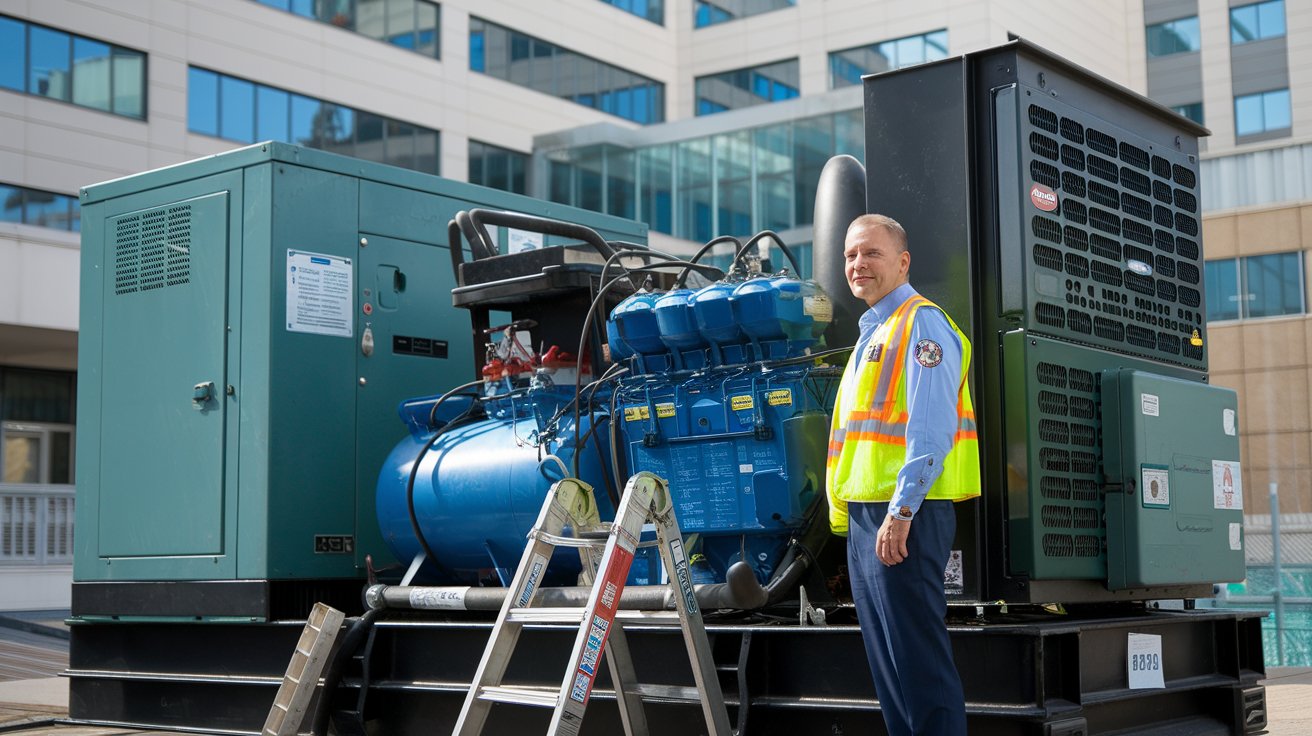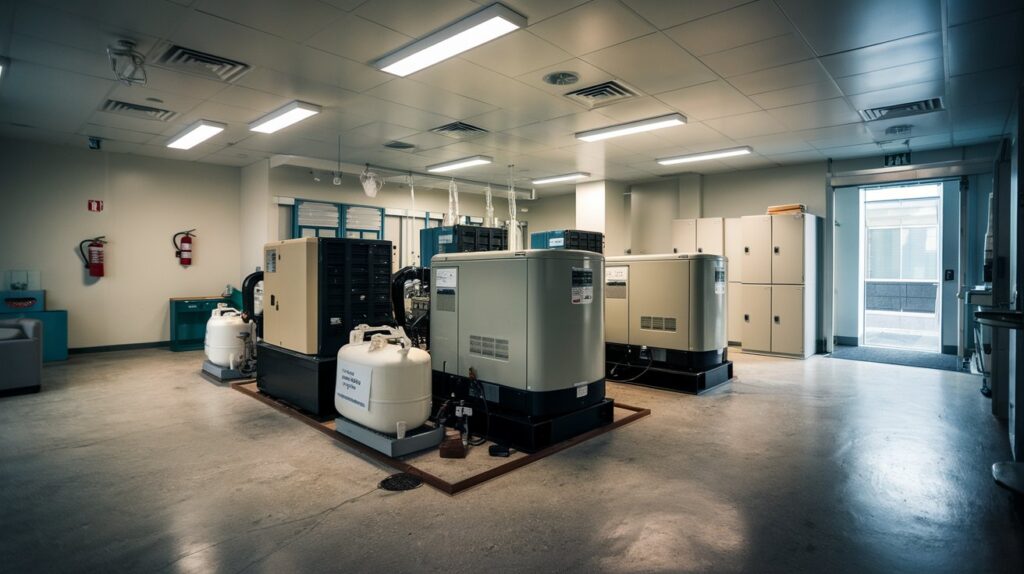A surgeon is midway through an emergency procedure when the hospital lights flicker. Monitors beep erratically, machines whir to a halt, and panic surges through the operating room. Scenarios like this aren’t just dramatic—they’re deadly. That’s why generators for hospitals aren’t just backup equipment; they’re silent guardians of human life. In this post, we’ll explore how these power giants ensure hospitals never miss a heartbeat, even when the grid fails.
What Are Generators for Hospitals?
Let’s cut through the jargon: Generators for hospitals are industrial-grade power systems designed to kick in instantly during outages. Unlike the portable generator in your garage, these units are built to handle massive loads—think MRI machines, ventilators, ICU monitors, and entire HVAC systems—without skipping a beat. They’re the unsung heroes that keep healthcare facilities running when Mother Nature, aging infrastructure, or accidents pull the plug.
Why Hospitals Can’t Afford to “Wing It” Without Generators
Hospitals aren’t just buildings; they’re ecosystems of critical care. A power outage here isn’t an inconvenience—it’s a crisis. Here’s why generators for hospitals are non-negotiable:
1. Life Support Systems Demand Uninterrupted Power
Ventilators, dialysis machines, and incubators for newborns don’t have an “off” button. Without generators for hospitals, a 10-minute outage could turn fatal.
2. Surgeries Don’t Pause for Blackouts
Imagine a cardiac surgeon halfway through bypass surgery when the lights go out. Generators ensure operating rooms stay lit, sterile, and fully functional—no exceptions.
3. Preserving Medications and Samples
Vaccines, blood bags, and lab specimens often require strict temperature control. A generator prevents costly (and dangerous) spoilage during outages.
4. Cybersecurity and Data Integrity
Modern hospitals rely on digital records and networked devices. Sudden shutdowns can corrupt patient data or expose systems to cyber threats.

How Generators for Hospitals Work During a Crisis
It’s not magic—it’s engineering brilliance. Here’s the play-by-play of how generators for hospitals leap into action:
Grid Failure Detection: Sensors spot a power drop within milliseconds.
Automatic Switchover: The system disconnects from the grid and fires up the generator—all in under 10 seconds.
Full Load Support: The generator powers every critical system until grid power resumes.
Seamless Transition: Once the grid stabilizes, the system switches back, and the generator cools down on standby.
No drama, no delays—just relentless reliability.

Types of Generators for Hospitals: Picking the Right Lifeline
Not all generators are cut out for healthcare’s high stakes. Here’s a breakdown:
1. Diesel Generators
Pros: Fuel-efficient, durable, and ideal for long outages.
Cons: Require regular maintenance and fuel storage.
Best For: Large hospitals with extended backup needs.
2. Natural Gas Generators
Pros: Cleaner emissions, no on-site fuel storage.
Cons: Dependent on gas line reliability.
Best For: Urban hospitals with gas infrastructure.
3. Bi-Fuel Generators
Pros: Combine diesel and gas for flexibility.
Cons: Higher upfront cost.
Best For: Facilities in disaster-prone areas.
Beyond Backup: How Generators for Hospitals Enable Disaster Preparedness
When hurricanes, wildfires, or floods strike, hospitals become ground zero for rescue efforts. Generators for hospitals do more than keep the lights on—they transform facilities into resilient hubs:
Emergency Response: Power triage tents, mobile labs, and charging stations for rescue teams.
Community Shelter: Sustain air conditioning, clean water pumps, and communication systems for displaced families.
Long-Term Care: Support dialysis or chemotherapy patients when other clinics shut down.
Rent vs. Buy: Why Many Hospitals Choose Flexible Power Solutions
Buying a hospital-grade generator can cost millions—plus upkeep, testing, and compliance fees. That’s why savvy healthcare providers are turning to rentals:
1. Budget-Friendly
Redirect capital to patient care instead of sinking it into hardware. Rentals offer premium generators without the long-term debt.
2. Compliance Made Simple
Rental providers handle NFPA 110 standards, fuel testing, and emissions checks. No need to train staff on complex regulations.
3. Scalability for Growing Needs
Expanding your facility? Upgrade your generator capacity without selling old equipment.

How to Choose the Best Generator for Your Hospital
Skip the guesswork with this checklist:
1. Calculate Your Critical Load
Audit every essential system—ventilators, ORs, labs, servers—and add a 30% buffer. Pro tip: Don’t forget elevators for patient transport!
2. Prioritize Fuel Resilience
Ensure you have 72+ hours of on-site fuel (diesel, gas, or dual-supply). For flood zones, elevate tanks.
3. Test Relentlessly
Monthly load tests and annual “blackout drills” keep systems battle-ready.
4. Partner with Experts
Work with providers who specialize in generators for hospitals—not just any contractor.
Rental Genset: Powering Healthcare Heroes
At Rental Genset, we don’t just supply generators—we safeguard lives. Here’s why leading hospitals trust us:
24/7 Emergency Response: Our team deploys generators within hours, day or night.
Healthcare-Specific Expertise: We know IEC 60364-7-710 standards inside out.
Tailored Solutions: From rooftop generators for space-starved urban hospitals to bi-fuel units for rural clinics, we’ve got you covered.
Our mission? Simple: Ensure no patient ever suffers because of a power failure.
Conclusion
Generators for hospitals aren’t just machines—they’re lifelines. They empower doctors to save lives, protect fragile ecosystems of care, and uphold trust in our healthcare system. Whether you’re prepping for a storm or overhauling your facility’s infrastructure, the right generator partner makes all the difference.
